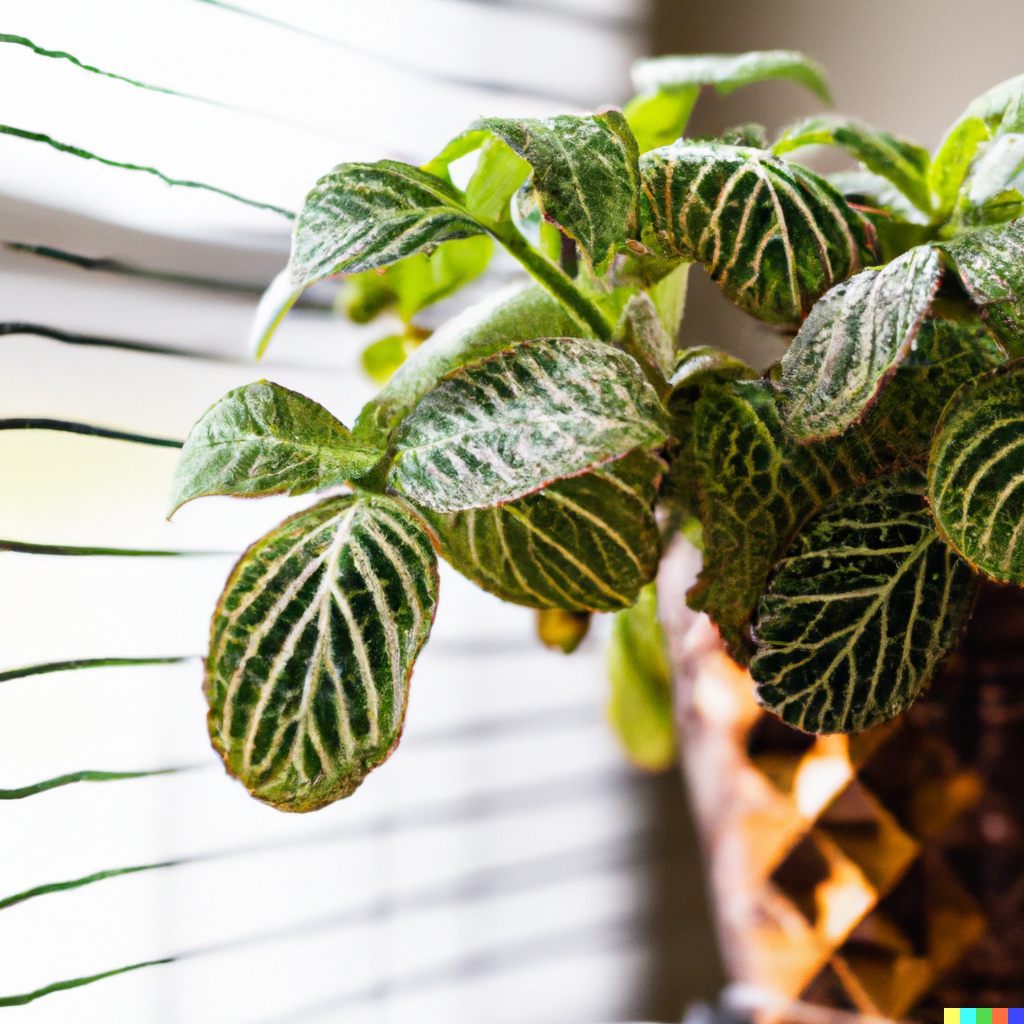With its vividly colored leaves and trailing vine-like stems, the Fittonia is one of the most captivating foliage houseplants you can grow. This plant is commonly called Nerve Plant or Mosaic Plant thanks to the distinctive veining on its leaves. Discover the ultimate Fittonia care guide to keep your Nerve Plant thriving.
Learn about proper lighting, watering, temperature, humidity, soil, propagation, and more to achieve healthy, vibrant leaves. We’ll also explore some stunning Fittonia varieties and where to find them.
Let’s dive in and unlock the secrets of fittonia success! Whether you’re a beginner or an expert gardener, this guide will equip you with the key tips and tricks for robust fittonia growth. Read on to become a fittonia pro.
Key Takeaways
- Choose brightly colored fittonia varieties to add visual interest as houseplants or terrarium plants.
- Provide consistent warm temperatures around 65-80°F and very high humidity above 60%.
- Water thoroughly whenever the topsoil feels dry to keep fittonias from wilting.
- Bright, indirect light is essential for fittonias to maintain vivid leaf patterns.
- Use a rich, well-draining potting mix and fertilize monthly during the growing season.
- Propagate new plants easily from stem cuttings rooted in water or soil.
- With proper care, fittonias can thrive indoors for 5-10 years or longer.
- Mist leaves, use a pebble tray, and group plants to boost moisture levels.
- Repot annually in spring to allow room for expanding root systems.
- Remove dead leaves and stems promptly to encourage healthy new growth.
A Selection of Stunning Fittonia Varieties (& Similar Plants)
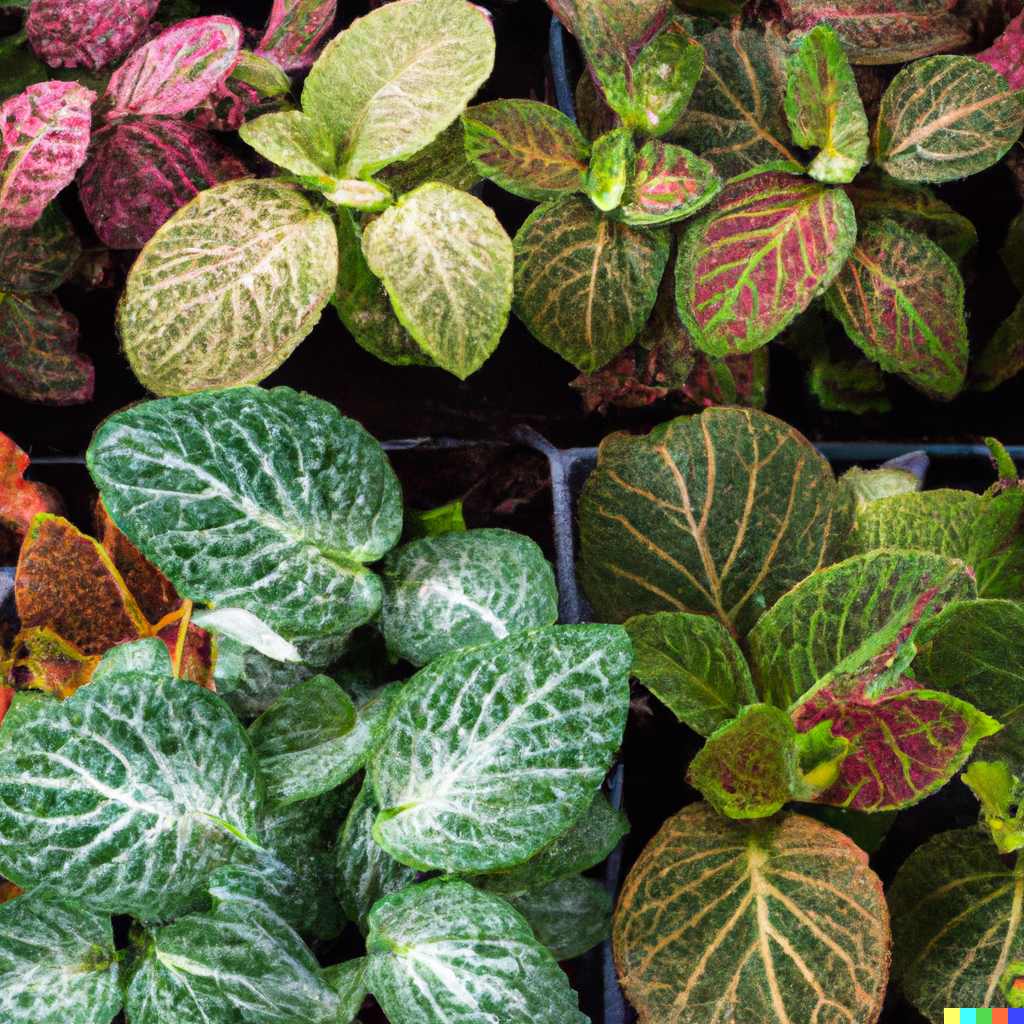
One of the best parts of growing fittonias is the diversity of leaf forms and colors available. Here are some of the most popular types:
- Fittonia albivenis – This is the classic green and white nerve plant with dark green leaves and prominent white/silver veining. It has a spreading, trailing habit.
- Fittonia verschaffeltii – Often called pink nerve plant, this variety has dark pink veins on olive green leaves for a vivid color contrast. It remains more compact than other types.
- Fittonia argyroneura – This fittonia cultivar is known for its bright lime green and white foliage. The leaves are smaller than other varieties.
- Fittonia skeleta – A rare find, this fittonia has intricate webbing and veining on small, dark green leaves.
- Fittonia jasminoides – Vining stems with tiny elliptical leaves make this a great option for hanging baskets. Foliage is green with white veins.
Some plants that look similar to fittonias include:
- Ctenanthe setosa (fishbone prayer plant)
- Calathea makoyana (peacock plant)
- Maranta leuconeura (prayer plant)
- Soleirolia soleirolii (baby tears)
When sourcing fittonias, look for plants with full foliage coverage and no browning or yellowing on leaves. The soil should be moist but not soggy. As we’ll discuss later, nerve plants require high humidity, so this is key for healthy growth.
Where to Buy Nerve Plants
Fittonias are one of the more commonly available houseplants, so you should be able to find them at most well-stocked garden centers, nurseries, or hardware stores. Check the indoor plant section.
Some specific retailers that tend to carry fittonias include:
- Local nurseries and greenhouse growers – they can also supplement our fittonia care guide with expert advice
- Home Depot, Lowe’s, Walmart, Target
- Online stores like Bloomscape, The Sill, Gabriella Plants
- Etsy
 (especially rare varieties)
(especially rare varieties)
If you can’t find the specific fittonia variety you’re looking for locally, online mail order is a great option. Etsy and specialty rare plant sites like Gabriella Plants, Steve’s Leaves, and Glasshouse Works offer more unique types.
When buying online, inspect the plant closely upon arrival and watch for any signs of dehydration or shock during shipping. Give the plant a few days to recover in proper conditions before repotting.
You can also easily propagate new fittonia plants from the cuttings of an existing plant. We’ll cover how to do this later in the guide. Sharing clippings with fellow plant lovers is a great way to obtain new variety specimens. For inspiration, check out this stunning fittonia terrarium creation guide.
No matter where you source your new nerve plant babies, acclimating them gradually and providing attentive care (as per this Fittonia Care Guide) will set them up for vigorous growth.
How Do You Propagate Fittonia (for free!)?
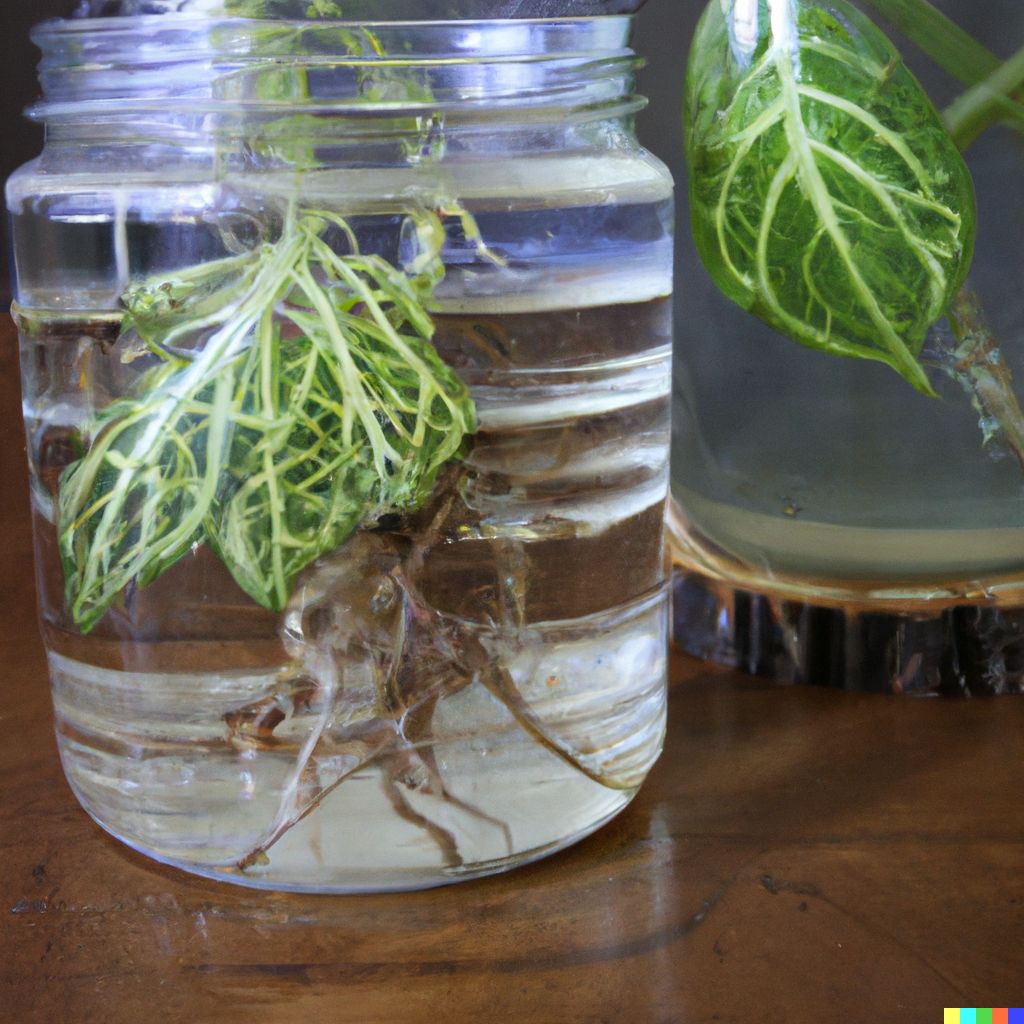
One of the best things about growing fittonias is how easily they can be propagated. You can get new baby nerve plants for free by taking cuttings from an existing plant. Here’s a step-by-step Fittonia care guide and propagation guide:
- Use sterile, sharp scissors or shears to snip a stem cutting that is a few inches long. It should have at least 2-3 leaf nodes on it. The nodes are the bumps on the stem where leaves emerge.
- Optionally dip the end of the cutting in rooting hormone powder to encourage faster root growth.
- Place the fittonia cutting in a glass of water or insert it into a potting mix. Water propagation and soil propagation both work well.
- Maintain bright indirect light and high humidity around the cutting. Avoid direct sunlight.
- Change the water frequently if propagating in water. Keep the soil moist but not soggy if planted.
- In about 2-6 weeks, you should see new white roots emerging from the nodes.
- Once the cutting is rooted, transplant it into its own pot with well-draining indoor plant soil. Gradually acclimate it to normal home conditions.
- Voila! Enjoy your new free fittonia plant. Repeat with more cuttings for unlimited babies!
Fittonia Care Guide for Growth
Growing a thriving fittonia plant may seem tricky, but have no fear! By following a few simple care guidelines, even novice gardeners can cultivate lush, vibrant nerve plants. This easy-going houseplant will repay basic attentive care with eye-catching foliage.
Here are the key factors to focus on for healthy fittonia care and robust growth:
- Lighting – Fittonias need bright filtered light, but direct hot sun will scorch their leaves. Aim for a spot a few feet from an east or west window, or place in a north window. Fluorescent office lighting also works well. Rotate the plant periodically to prevent uneven growth.
- Watering – These tropical plants crave moisture! Water thoroughly whenever the top inch of the soil feels dry. Avoid soggy soil which can cause stem rot. Add pebbles to the pot’s drainage tray to boost humidity around the plant.
- Substrate – Use a rich, fast-draining indoor potting mix. Good aeration prevents overwatering. You can amend with perlite, orchid bark, or charcoal for improved drainage.
- Temperature – Fittonias prefer average room temperature between 65-80°F (18-27°C). Avoid cold drafts. Use a small portable heater or fan to maintain ideal conditions.
- Humidity – High humidity of 60-90% is a must! Use a humidifier, pebble tray, or humidity dome to prevent leaf browning and curling. Group plants together to boost moisture. Mist leaves daily.
- Fertilizer – Feed monthly during the growing season with a balanced liquid fertilizer diluted to half strength. Rinse salt buildup every few months.
- Pruning – Remove any dead or damaged leaves, stems, and spent flowers to encourage new growth. Sterilize pruners between cuts.
Fittonia Care Quick Reference
| Factor | Tips |
|---|---|
| Light | Bright, indirect light. Avoid direct sun. |
| Water | Keep soil consistently moist, water when partly dry. |
| Temperature | 65-80°F, avoid cold drafts. |
| Humidity | 60-90% humidity, mist leaves and use pebble tray. |
| Soil | Rich, well-draining potting mix. |
| Fertilizer | 60-90% humidity, mist leaves and use a pebble tray. |
| Pruning | Balanced liquid fertilizer every 2-4 weeks during the growing season. |
Meeting these care needs will result in fast growth and vibrant leaf patterns. We’ll explore the specifics of each element in the following sections. Proper care is easy once you understand what makes fittonias thrive!
Fittonia Lighting Requirements
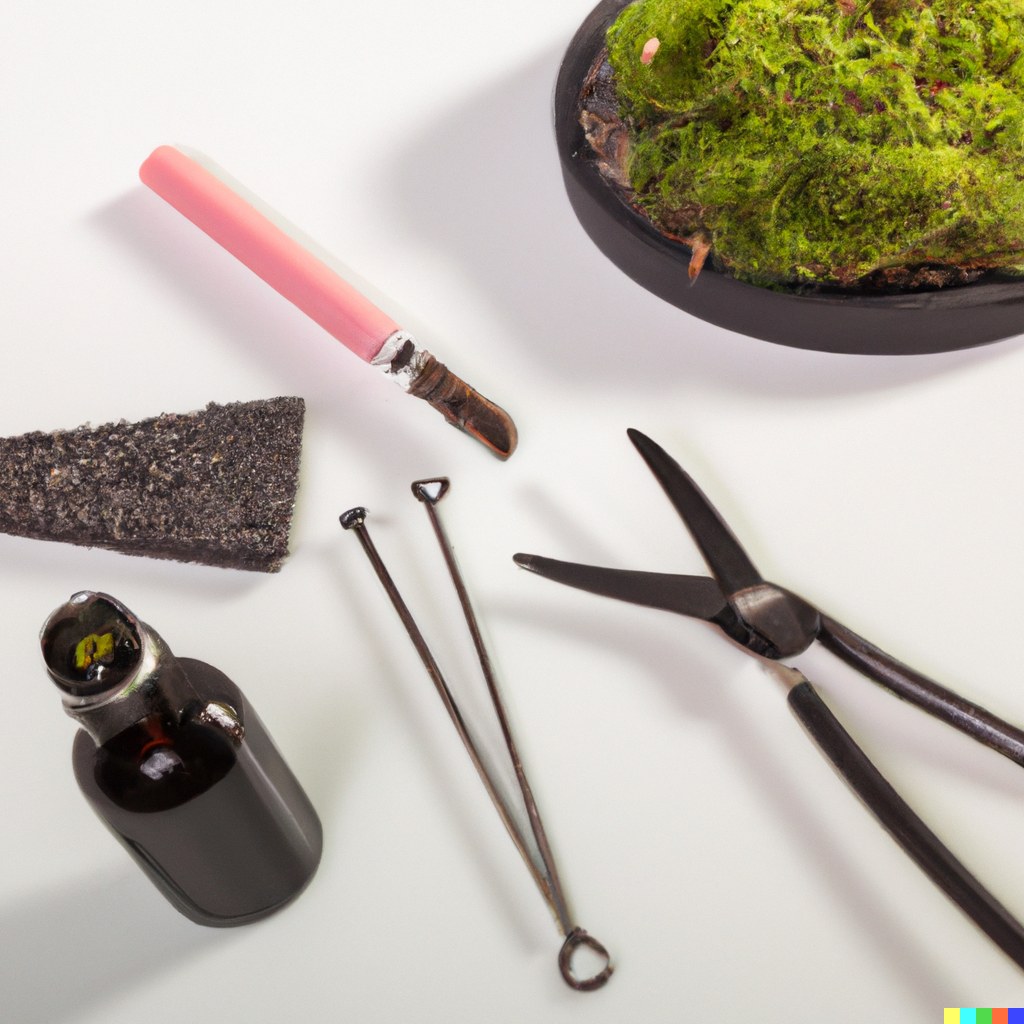
Proper lighting is key to keeping your fittonia‘s foliage vibrant. This tropical plant thrives in bright, indirect light that averages 2000-4000 lux.
Avoid placing nerve plants in direct sunlight, which can scorch and fade their delicate leaves. Direct southern exposure is too intense, but a few hours of filtered eastern or western sun is tolerable.
For the best results, situate your fittonia roughly 2-5 feet from an east- or west-facing window. You can also place it near a north-facing window if brighter light is not available. Rotate the plant periodically to prevent lopsided growth.
Artificial lighting from fluorescent or LED plant grow lights works very well too. Position the lights 6-12 inches above the fittonia and set the timer for 12-14 hours per day. This will sufficiently mimic their native rainforest conditions.
Regularly dust off fittonia leaves to maximize light exposure. Monitor for any fading or scorching, and adjust the lighting as needed. Consistent bright, indirect light will reward you with vivid leaf patterns!
Watering Fittonia
Providing adequate moisture is vital for our fittonia care guide. These tropical broadleaf plants crave high humidity and frequent watering.
Check the soil moisture daily by inserting your finger into the top inch of the soil. Water thoroughly whenever the top layer feels dry. Fittonias should never be allowed to wilt or dry out entirely.
When watering, add enough so that liquid drains from the drainage holes at the bottom of the pot. This ensures the entire root zone receives hydration.
Avoid overwatering which can lead to root rot – only water when the soil is partly dry. Allow any excess water to drain away after irrigating.
Misting the foliage daily will also boost humidity which fittonias require. Add pebbles to a drainage tray under the pot to create a humidity reservoir.
In dry environments, grouping fittonia plants together helps maintain moist conditions. Increase air circulation to prevent disease if humidity is very high.
Consistent soil moisture will reward you with fast, lush growth. Check moisture levels often and water frequently for thriving, colorful leaves. Never allow this tropical plant to dry out!
Substrate / Soil Options
To support healthy root growth, fittonias require a rich, well-aerated potting mix. The best substrates provide moisture retention but also allow excess water to drain.
A basic houseplant soil works well, provided it contains organic matter for nutrients. You can also create a customized aroid mix with these ingredients:
- 2 parts potting soil
- 1 part perlite or orchid bark for drainage
- 1 part peat moss to retain some moisture
- Optional charcoal, compost, or worm castings
Whatever potting mix you use, aim for a lightweight, fluffy texture that drains well. Soils heavy in peat or clay will hold too much moisture.
To improve drainage in dense store-bought mixes, amend with 30% perlite or orchid bark. Terracotta pots also promote air circulation to the roots.
Re-pot fittonias annually in fresh potting mix to provide nutrients. Carefully loosen the roots and settle the plant into its new home.
With a rich, porous growing medium, your fittonia will thrive. Proper soil moisture and aeration will spur lush leaf growth.
Temperature & Humidity
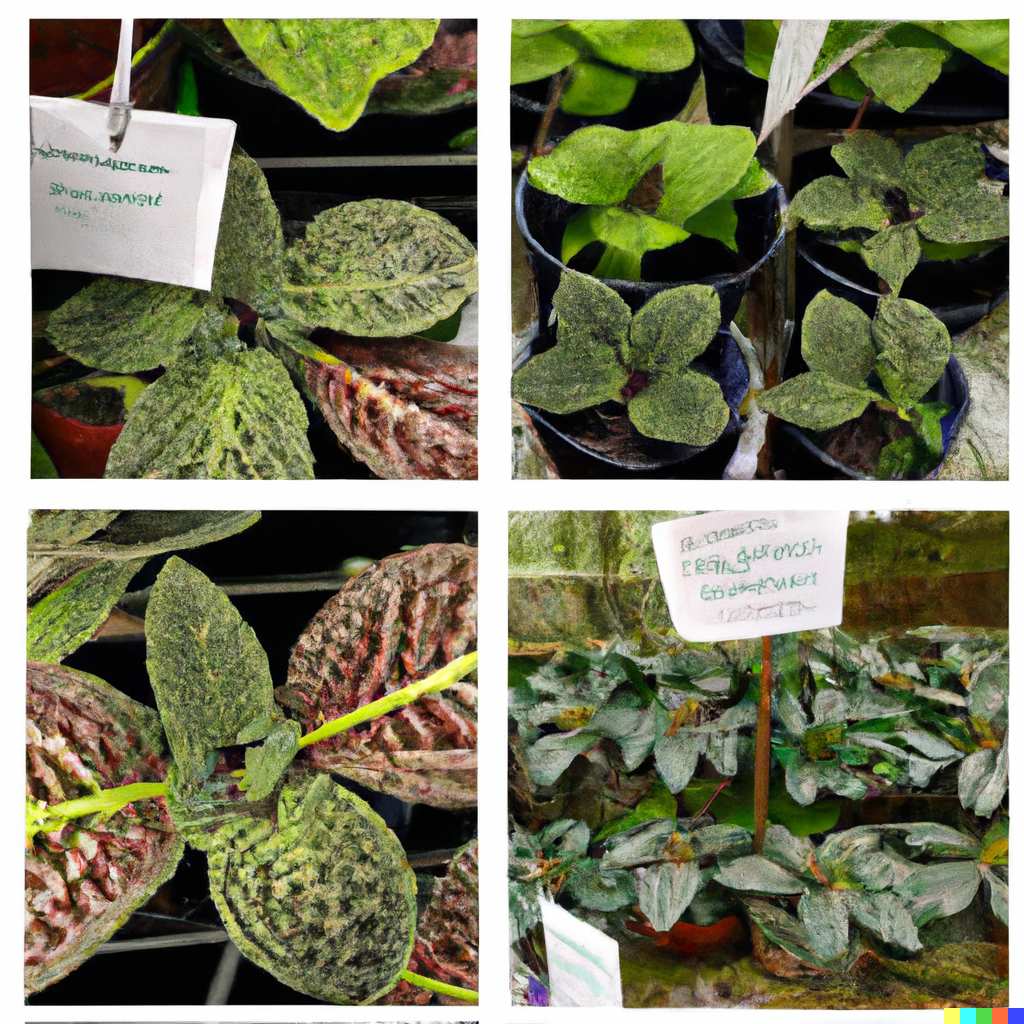
To mimic their native tropical habitat, fittonias require warm temperatures and very high humidity.
The ideal temperature range is 65-80°F (18-27°C). Avoid exposing the plants to cold drafts, which can damage leaves. Use a portable heater or fan to maintain the optimum conditions.
Even more important is providing humidity levels between 60-90%. The higher the better for fittonias! Use a humidifier, pebble tray, or humidity dome to boost moisture in the air.
Grouping several nerve plants together also raises local humidity. Mist the leaves daily to supplement moisture levels. Open doors and windows periodically to refresh stale air.
Monitor humidity with a hygrometer. If levels drop below 40%, you may see browning leaf edges, curling, or crispy foliage.
Stagnant air can also breed diseases like botrytis gray mold. Improve air circulation with small fans if humidity is very high.
Recreating a tropical rainforest environment will reward you with fast, vigorous fittonia growth. Aim to keep your plant warm and steamy.
Growth
With the proper care, fittonias will reward you with fast growth. Trailing varieties can grow up to 12 inches tall with leaves reaching 2-4 inches long.
Fittonias left to their own devices can become leggy and sparse looking. To encourage full, bushy growth:
- Prune back trailing stems to reshape the plant as needed
- Pinch off stem tips periodically to induce branching
- Rotate the pot regularly so all sides get equal light exposure
As the plant fills out its pot, re-pot annually in the spring into a slightly larger container. This allows the expanding root system more room.
Divide overcrowded fittonia clumps by gently separating rooted stems. Re-plant divisions to multiply your plant collection.
Remove any dead or damaged leaves/stems promptly to guide energy into new growth. Sterilize pruning shears between each cut.
With high humidity and good light, fittonias can double in size each year. Guide your plant with strategic pruning for the desired shape and fullness.
Fertilizing a Fittonia
Feed fittonias monthly in the growing season with a balanced liquid houseplant fertilizer diluted to half strength. Look for a formula in the ratio of 20-20-20 or 10-10-10 NPK.
Reduce fertilizer frequency in winter when growth slows. Flush the soil every 3-4 months to prevent salt buildup.
If leaves begin to yellow or new growth stalls, increase feeding to twice monthly. Slow release pellet fertilizer applied in spring can provide lasting nutrients.
Never apply fertilizer to already dry soil or damaged roots. Good drainage prevents root burn. Mist after feeding to rinse leaves.
Adequate fertilization ensures fittonias have the nutrients to fuel lush colorful growth. But take care not to overfeed as excess salts can harm roots.
Pests and Diseases
While generally pest and disease-resistant, fittonias can occasionally suffer from the following issues:
- Mealybugs – Cottony white bugs that leave a sticky residue. Wipe off with alcohol or insecticidal soap.
- Aphids – Small green/black insects that cluster on stems and leaves. Rinse off with water or apply neem oil.
- Thrips – Tiny winged pests that cause silver scarring. Use spinosad or pyrethrin spray.
- Root rot – Caused by overwatering. Improve drainage and allow the soil to dry between waterings.
- Botrytis gray mold – Grayish fungal infection in humid conditions. Increase airflow.
- Bacterial leaf spot – Angular brown spots on leaves. Prune affected foliage.
- Mealybugs – Cottony insects that leave a sticky residue. Wipe off with alcohol/soap.
Expected Lifespan
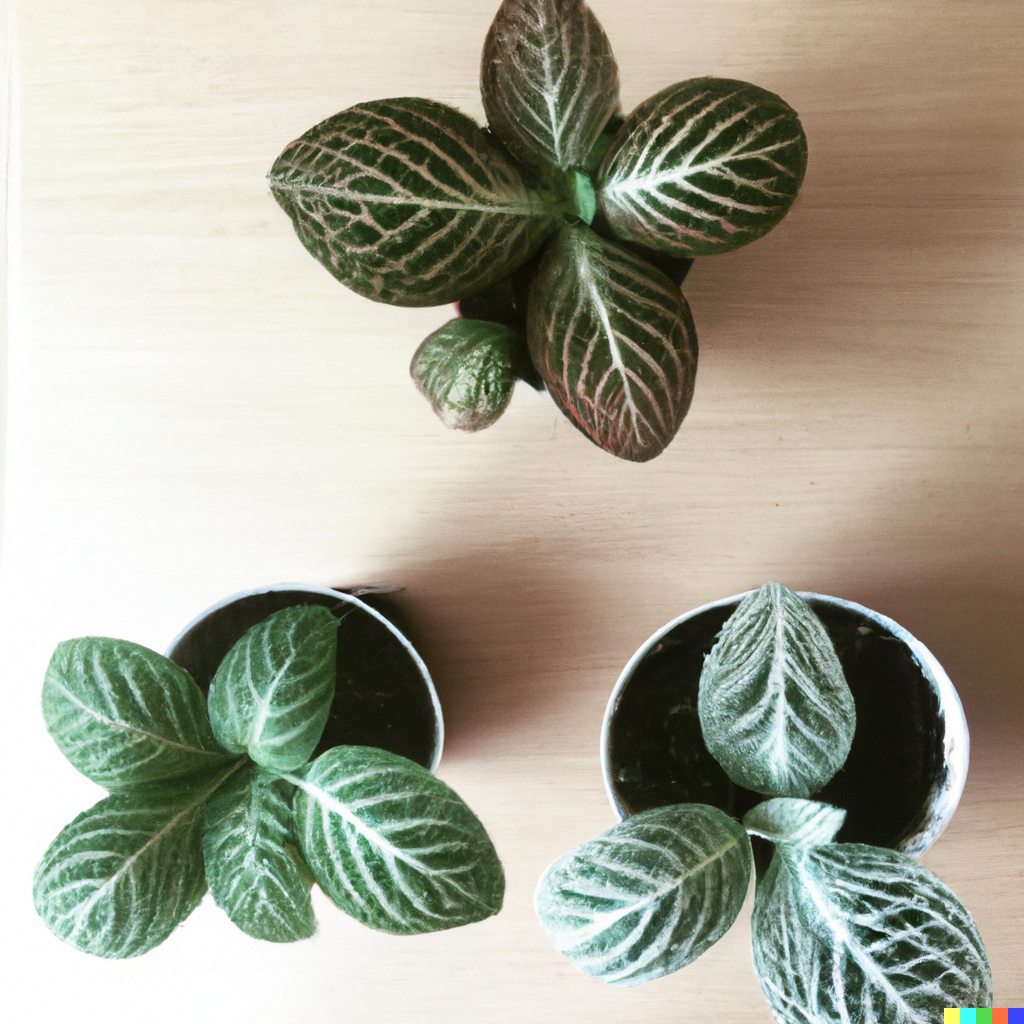
With attentive care, fittonias can grace your home with their beauty for many years to come. Indoor nerve plants typically thrive for 5-10 years or longer under ideal conditions, so why not follow our Fittonia Care Guide?
Here are some factors that influence their lifespan:
- Growing conditions – Maintaining consistent humidity around 60-80%, regular watering, bright indirect light, and warm temps year-round allows fittonias to flourish. Replicating their native tropical habitat boosts longevity.
- Pot size – Repotting in a slightly larger container every 2-3 years provides room for the expanding root system. A cramped pot will restrict growth over time.
- Pruning – Regularly removing dead or damaged leaves/stems encourages new healthy growth. Trimming back leggy vines shapes the plant and improves air circulation.
- Plant health – Catching and treating diseases early on, monitoring for pests, and avoiding environmental stresses will prevent decline. Stressed plants have reduced lifespans.
- Variety – Some popular varieties like Fittonia albivenis or Verschaffeltii may naturally live longer than rarer types. Their growth habit may also be more enduring.
With attentive care and quick intervention when problems arise, fittonias can retain their beauty and remain vigorous for over a decade. Their slow graceful growth makes them enduring houseplants if given the proper nurturing environment.
Frequently Asked Questions – Fittonia Care Guide
Are fittonias poisonous?
No, fittonias are non-toxic to humans and pets. This makes them safe for homes with children or animals. Their leaves may cause mild irritation if eaten, but generally, they are not hazardous.
What are fittonias good for?
Fittonias are cultivated primarily for their beautiful ornamental foliage. The brightly colored leaves with contrasting veining add visual interest to indoor plant displays. Their trailing habit makes them excellent for terrariums or hanging basket plants.
Is fittonia difficult to care for?
While they require some specific growing conditions, fittonias are not overly demanding houseplants. Providing consistent humidity, filtered light, warm temperatures, and regular watering satisfies their needs. Their tendency to wilt or “faint” when stressed gives them a reputation for being dramatic! But with proper care, they are relatively easy plants.
Why are my fittonia leaves wilting?
Leaf wilting is usually caused by low humidity or underwatering. Fittonias like very high humidity around 60-80%. Mist leaves, use a pebble tray, or get a humidifier to increase moisture. Also, check the soil daily and water whenever the top layer feels dry.
Why are fittonia leaf tips turning brown?
Brown crispy leaf tips are often due to low humidity or irregular watering. Try increasing air moisture and watering more frequently to keep the soil consistently moist.
How do I encourage more flowers on my fittonia?
Fittonias primarily bloom in the spring and summer when days lengthen. Providing bright light, warm temps, and regular fertilization during the growing season can encourage more flower spikes. But most grow fittonias for their foliage.
Should I trim off dead fittonia leaves?
Yes, promptly remove any dead, yellowing, or damaged foliage to the base of the stem. This encourages new growth and maintains the plant’s appearance. Sterilize pruners between each cut.
Conclusion
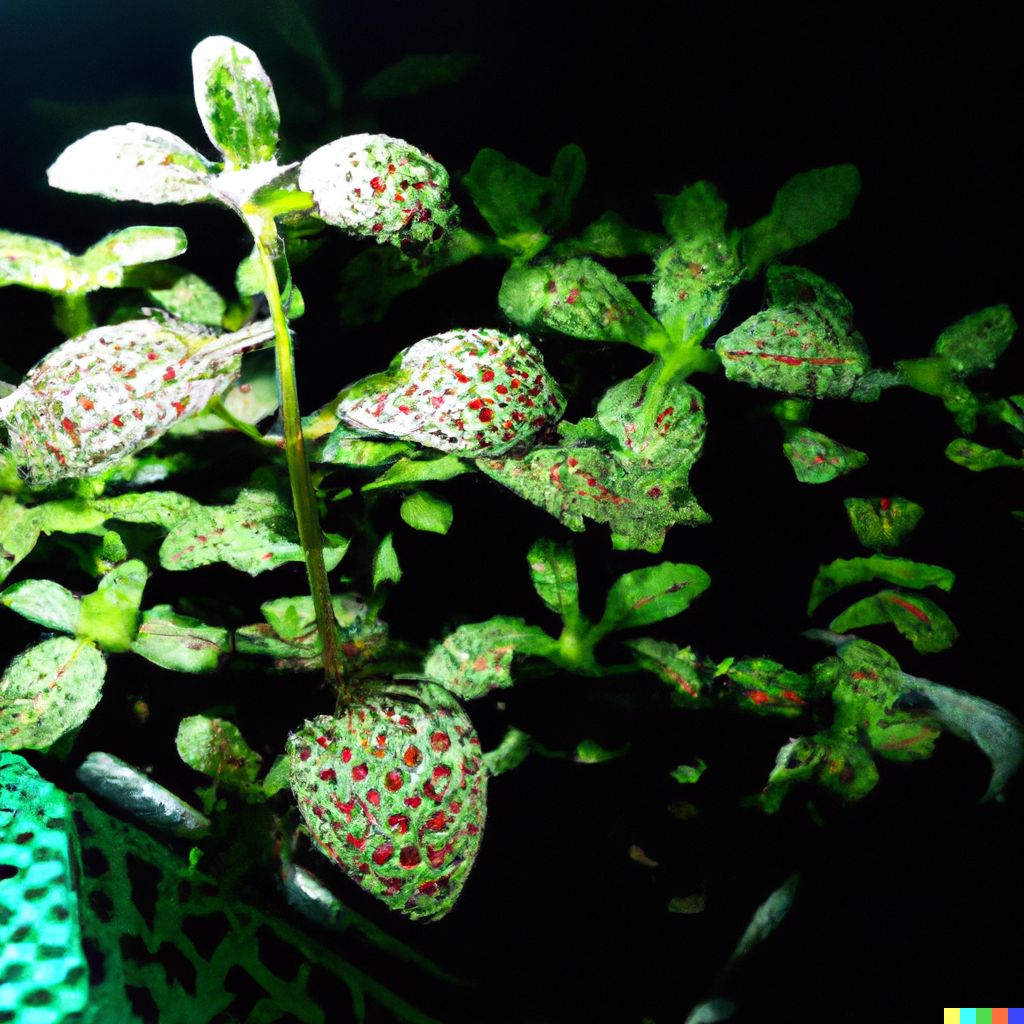
With their distinctly patterned foliage, fittonias provide unique visual flair in indoor plant displays. The cascades of colorful leaves trailing from hanging baskets or terrariums create a lush tropical look.
While nerve plants require some specialized care, their needs are easy to meet with consistent diligence. Providing warm, humid, bright but indirect light conditions allows fittonias to flourish. Letting the soil dry out or depriving them of humidity causes dramatic wilting. But with proper water, light, and nutrients, vibrant healthy growth will abound.
One of the easiest houseplants to propagate, sharing clippings with fellow plant lovers easily multiplies your fittonia collection. Their relatively slow growth makes them long-lived additions to any indoor garden.
Follow this complete care guide and you’ll unlock the secrets to cultivating gorgeous nerve plants. Fittonias will reward your efforts with verdant cascades of painted foliage.

